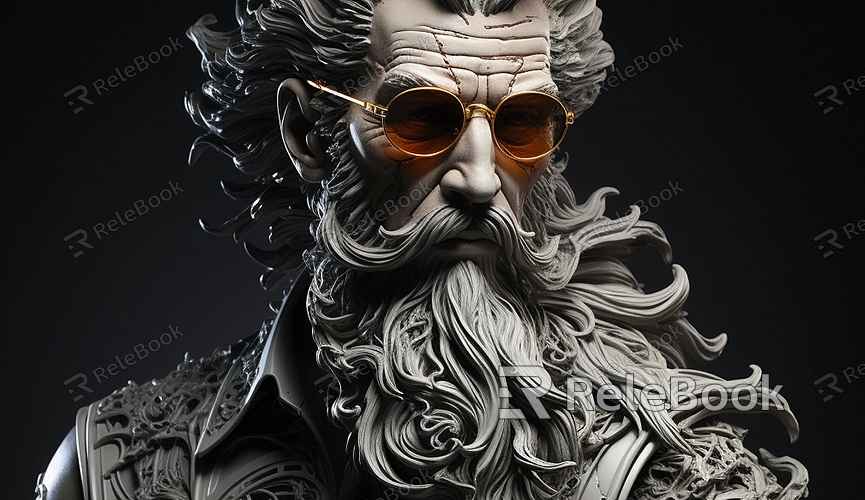How to Create a 3D Character Model
In fields like modern animation, game development, and virtual reality, creating 3D character models is a crucial step. Whether you're a beginner or an experienced 3D artist, understanding how to create a high-quality 3D character model from scratch is an essential skill. This article will detail the steps and techniques involved in creating a 3D character model in Blender.
Choosing Reference Materials
Before starting to create a 3D character model, it's essential to gather reference materials. These can include hand-drawn sketches, photos, or other 3D models. Reference materials provide clarity on the character's appearance, proportions, and details, which are crucial for the modeling process.

Creating Basic Shapes
In Blender, the first step in creating a 3D character model is to build basic shapes. This typically involves using simple geometric primitives (such as cubes, spheres, etc.) to construct the main parts of the character, such as the head, body, limbs, etc. You can use Blender's basic modeling tools like Extrude, Scale, and Rotate to adjust the shapes and positions of these primitives.
Refining the Model
Once the basic shapes are established, you can begin refining the model. This step involves gradually adding more details such as facial features, muscle contours, clothing wrinkles, etc. In Blender, you can use sculpting tools to make finer adjustments. Sculpting tools allow you to push, pull, smooth, and manipulate the surface of the model as if you were sculpting with real tools, creating realistic details.
Adding Materials and Textures
After refining the model, the next step is to add materials and textures to the character. Materials determine the glossiness and color of the character's surface, while textures add more details such as skin texture, clothing patterns, etc. In Blender, you can use the Node Editor to create and adjust materials and textures. By combining different texture maps (such as diffuse maps, normal maps, etc.), you can achieve a variety of visual effects.
Adjusting Lighting and Rendering Settings
Once materials and textures are applied, you need to set up lighting and rendering parameters for the character. Lighting significantly affects the final look of the model, enhancing its details and making it more vibrant. In Blender, you can use various types of light sources like Point Lights, Sun Lights, and Ambient Lights to create ideal lighting effects for the character. After setting up lighting, you'll also need to adjust rendering parameters such as resolution, sampling numbers, reflections/refractions, etc., to ensure high-quality image output.
Rigging and Animation
If you intend to animate the character, you'll need to add a skeleton system (Rigging). A skeleton system allows you to control the character's movements and poses like manipulating a puppet. In Blender, you can use the Armature tool to create a skeleton system for the character and bind it to the model. By adjusting bone weights and constraints, you can ensure natural movements during animation.
Exporting and Sharing
After completing all modeling, material, lighting, and animation setups, you can export the character model in various formats (such as FBX, OBJ, etc.) for use in other software or platforms. If you wish to share your work, you can upload it to online platforms like Sketchfab, ArtStation, etc., to connect and showcase your creations with a global community of 3D artists and enthusiasts.
Creating a 3D character model is a complex and challenging process, but with practice and experience, you can master the techniques and principles involved. If you need high-quality 3D textures, HDRI, or 3D model downloads for your modeling and virtual scene needs, consider downloading them from Relebook for direct integration into your projects.

